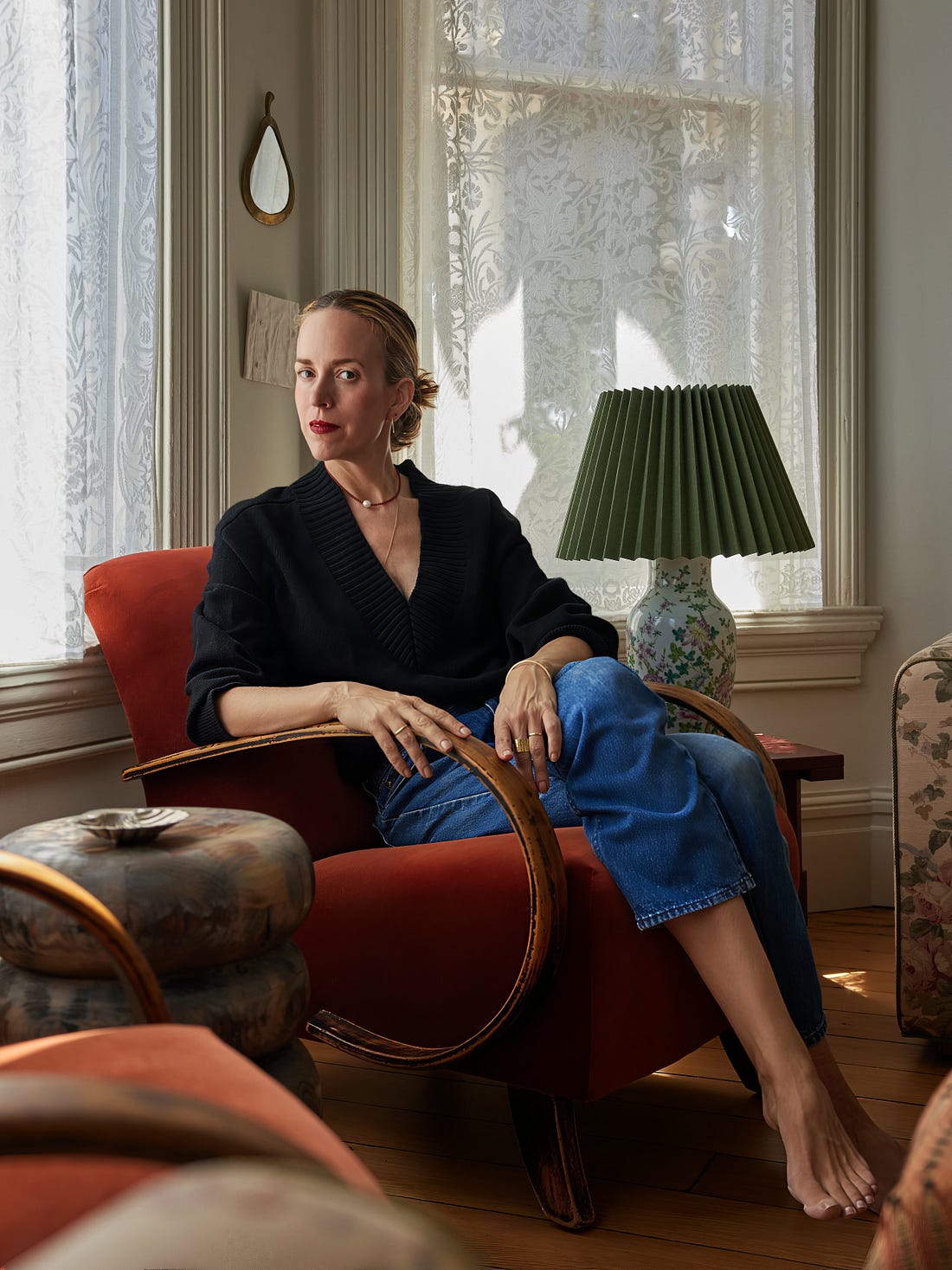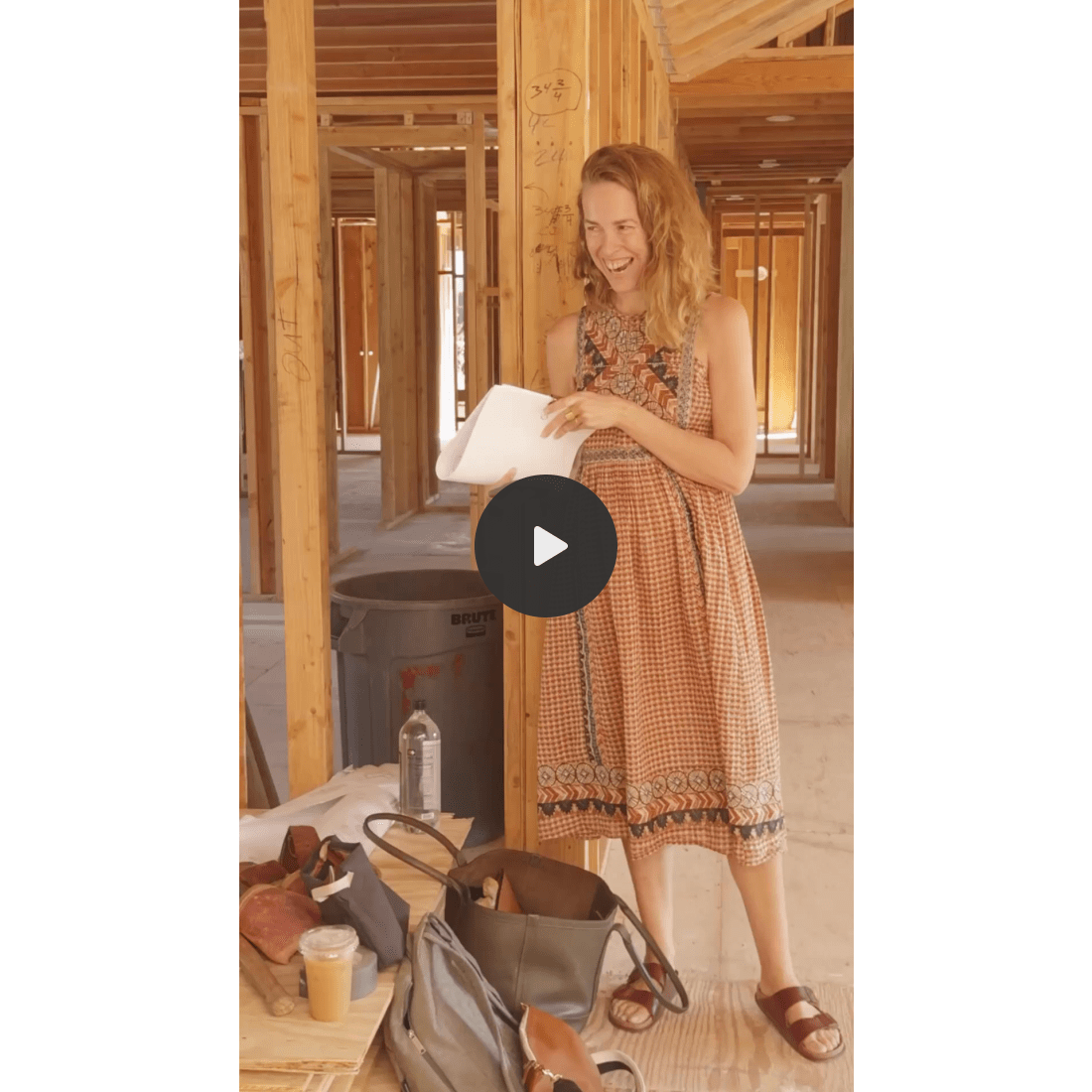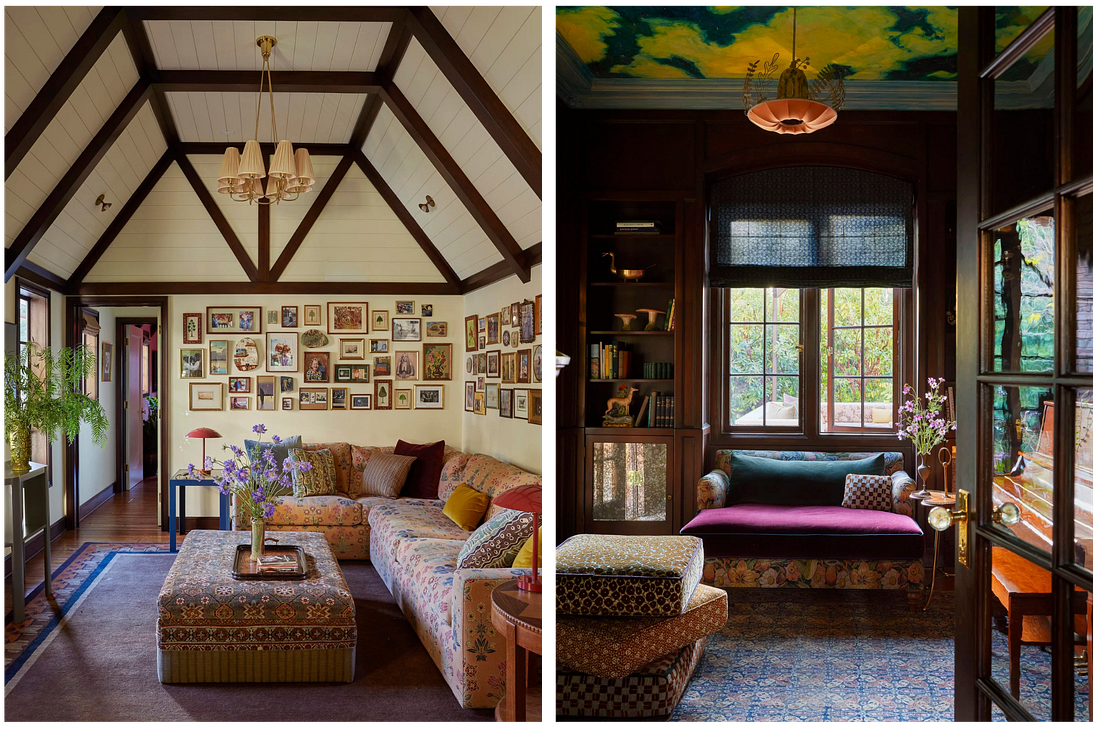This week, I’m delighted to introduce you to our interior designer, Frances Merrill, the founder of the L.A.-based Reath Design. After starting her career at Commune, which is somewhat like starting out as an art dealer by working at David Zwirner, Frances went out on her own in 2009. She has built a cult following and earned well-deserved accolades (AD100, ELLE Decor A-List) with a style distinctive for its confident use of pattern and color, and a subtle playfulness that leans eccentric. It’s challenging to define Frances’s work (even for her, as you’ll see), but what Tad and I liked was that her projects felt like homes. Some people want their house to have the recognizable look of a designer. We don’t. We were drawn to her work’s expressive hues, details, and manifest lack of ego. Frances’s projects are also, often, wildly different from one another. Because of the way she incorporates clients’ heirlooms and art into designs that mix vintage and modern furnishings, she’s able to chameleon her work into an L.A. Tudor as easily as a coastal cottage in Maine. We were also looking for someone who would stretch us with color, shapes, and pattern. In our Brooklyn apartment, we’ve leaned on a muted moss, dark sea, and wood palette to provide a sense of calm when coming in from the frenetic city. In Ojai—a radical downshift in population to 8,000 from NYC’s 8.5 million—it felt safe to assume that our tempos and blood pressure would lower themselves naturally. So while we wanted a home that felt relaxed, we also wanted one that drew from California’s ’70s-era casual as well as Ojai’s agricultural landscape. We thought that Frances’s style and Barbara Bestor’s clean-lined modernism had enough differences, enough tension, that, together, magic could happen. I’m a big believer that constraints and differences nurture fresh ideas. To begin, I wanted to ask how you create an environment for clients that you’re also proud of. Do you find you can usually change their minds on something that you don’t like or agree with—and if so, what techniques do you use? That’s a good question. I had experiences early in my career where I said yes to things people wanted, and then in the end they were unhappy with it. But you can’t be like, “Well, that’s what you asked for.” Ultimately, I have to be in service of the design looking good. I really try to come at a project from a client perspective, to listen to them and take their likes and dislikes into account. I’ve gotten better at saying, “I think you should take another look.” It doesn’t feel too pushy, or you still feel that you can say no, or request another option. One example is that Tad and I said we weren’t really fans of stripes. And you weren’t pushing stripes on us in any way, but you would introduce them here and there. You’d say, “I don’t know how you feel about this…” A person saying they don’t like stripes is like saying they don’t like seafood. There are many different kinds. You found the rare sea creatures of the stripes world for us to look at, and now we love them. I consider myself fairly intuitive when it comes to design, and it didn’t make sense to me that you didn’t like stripes. With other people I’d think, “Okay that tracks.” But with you I thought, “She’s wrong.” I realize now that we actually have had stripes in our apartment. I feel like maybe I am a stripes person, I’m just particular. I love people who are particular. I see parameters as problems to solve. That’s how you get the most interesting, successful end result. The analogy I always make is that the people who come to us should be people who are into design. They don’t just want their house to look nice and be comfortable. They want to work on it and they’re excited by it. Which means being particular. If someone walked into a house you designed, how would they know you were behind it? We’re working on a book, so that’s actually the thing I’m trying to figure out. The simple answer is probably the color—not that the palettes are the same in all our projects, but we use color as a tool, certainly. Our approach is almost always the same: try to really get to know and understand our clients. The biggest compliment I ever got was someone saying that when their house was done, their friends would all come over and say, “This looks so much like you.” That’s what we’re aiming for. If there’s a through line that comes with that, I would hope there’s a level of personality. Like the fresco you guys wanted to incorporate [see the last slide of our moodboard]. I love having those strong personal ties in a space. We had a client years ago who was a writer and her father had been a writer. He had passed away, and she had his writing desk that she then wrote at. It wasn’t exactly her style, and as we were designing her office, she asked, “Does this not go?” And I thought, I will fire myself if I say, ‘Yeah, your dad’s desk, it’s got to go. It doesn’t work in your house.’ Our job is to figure that stuff out. Speaking of family heirlooms, I have occasionally woken up in the middle of the night and thought, Oh, my God, I hope the fresco is still in one piece. Like, what if we’ve designed so much around it, and it’s fallen apart! Ha! Don’t worry: It’s in storage. I’m curious how you feel like your style is evolving. What are the things that you’re either drawn to or rejecting or exploring? ... Subscribe to Homeward to unlock the rest.Become a paying subscriber of Homeward to get access to this post and other subscriber-only content. A subscription gets you:
|
Friday, September 12, 2025
Meet our interior designer!
Subscribe to:
Posts (Atom)





